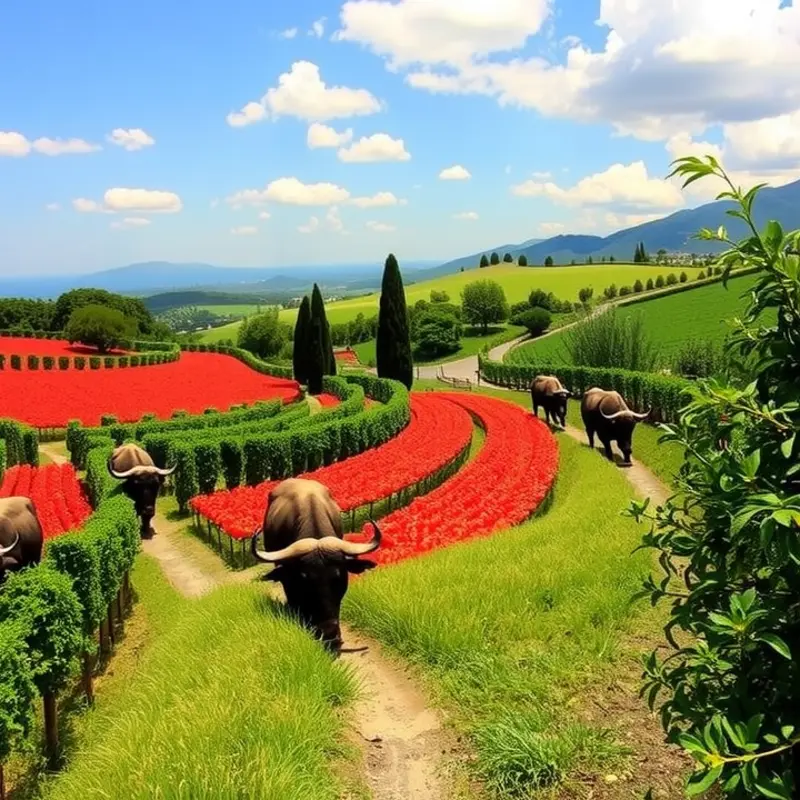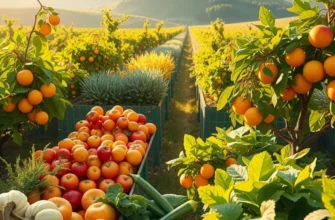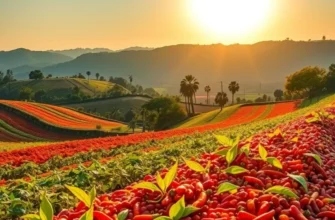Volcanic regions across the globe boast rich, fertile soils that yield distinctive flavors and ingredients. From the lush terrains of Indonesia to the rugged islands of the Mediterranean, these areas are home to culinary traditions that reflect both nature’s artistry and cultural heritage. Foods born from volcanic activity not only provide unique tastes but also a glimpse into the intertwined relationships between communities and their environments. Join us on a flavorful journey through two remarkable regions shaped by the earth’s fiery heart.
Island Flavors: The Culinary Treasures of Bali

Nestled in the heart of Indonesia, Bali is more than just a tourist haven; it is a culinary treasure trove where fiery volcanic activity shapes the flavors treasured by locals and visitors alike. Bali’s volcanic soil, rich in minerals, provides a fertile ground for an abundant array of produce. From aromatic herbs to robust spices, the island’s natural abundance is evident in its diverse cuisine.
One cannot delve into Balinese cuisine without mentioning the celebrated rendang. Though traditionally hailing from other parts of Indonesia, this slow-cooked beef dish has found a beloved place in Bali, emphasizing the island’s hospitality to diverse culinary influences. The earthy, sweet, and spice-infused flavors of rendang arise from lemongrass, galangal, and coconut milk, all ingredients thriving in Bali’s mineral-rich earth.
Seafood is paramount in Bali’s culinary landscape. The island’s location in the midst of the Indonesian archipelago ensures fresh catch daily, with offerings such as grilled fish seasoned with sambal, a piquant chili paste that locals argue is a must-have at any meal. This spicy accompaniment is as varied as the hand that prepares it, often including tomatoes, shallots, and chili peppers grounded in the mortar and pestle, a method that enhances its vibrant, zesty character.
Nasi campur provides a gateway to understanding how locals dine. This dish showcases a plate rivaled in color and texture, combining rice surrounded by an assortment of side dishes, from meats to vegetables, and, naturally, a healthy dollop of sambal. Its composition reflects the day’s catch and the harvest from the island’s fertile lands. Each serving is as unique as Bali’s volcanic landscapes, emphasizing variety and balance.
Amidst the spice and seafood, the use of tropical fruits cannot be overlooked. Fruits like jackfruit and rambutan thrive in the lush, volcanic climate, frequent stars in desserts and snacks, meanwhile boasting vivid flavors that cleanse the palate and soothe the heat of chili-laden main courses.
Beyond the gastronomic indulgence, Balinese food holds profound cultural significance. Meals are often communal, highlighting the island’s strong familial bonds and tradition. Ceremonial offerings, a constant tableau of Balinese spirituality, incorporate rice and fruit, underscoring their sacred connection to nourishment and prosperity.
Indonesian cuisine is a testament to adaptability and resourcefulness, tailoring dishes to suit the lavishness provided by volcanic soils. For those interested in enhancing their home cooking with similar principles of using bold flavors without overwhelming salt, refer to alternative flavor boosters, a guide that allows cooks to explore complex tastes akin to those found in Balinese culinary traditions.
Thus, the island of Bali represents more than breathtaking landscapes; it is a living, breathing example of how the union between land and people can manifest in unforgettable culinary creations. The island’s cuisine, spiced by the hand of fiery nature and seasoned with cultural nuance, awaits exploration by those willing to taste everything it has lovingly crafted.
From Earth to Plate: The Flavors of Italy’s Campania

Campania is an enchanting landscape where the influence of Mount Vesuvius extends beyond its ancient eruptions. The rich volcanic soil has given rise to some of Italy’s most cherished ingredients, celebrated in kitchens throughout the region. This chapter delves into the symbiotic relationship between the land and its culinary identity, highlighting how geography profoundly shapes Campania’s gastronomy.
The San Marzano tomatoes, coveted by chefs worldwide, owe their robust flavor and vibrant color to Campania’s fertile soil. These tomatoes are integral to the region’s iconic dishes, particularly pizza Napoletana. The pizza, with its soft, chewy crust and luxurious toppings, is not just a dish but a testament to Campania’s deep-rooted food culture. The passion poured into perfecting each pizza is palpable, as local chefs consider it both art and tradition.
Another treasure of the region, mozzarella di bufala, embodies the essence of Campanian cheese-making. Crafted from the milk of water buffaloes that graze on volcanic pastures, this cheese is celebrated for its creamy texture and delicate taste. It features prominently in salads like caprese, where it pairs beautifully with ripe tomatoes and fresh basil, highlighting the simplicity and flavor harmony that Italian cuisine is famous for.
The people of Campania harness their lush surroundings to create dishes that are not only flavorful but deeply evocative of the land itself. From the flavorful depth of pasta dishes like spaghetti alle vongole to the comforting warmth of traditional stews, each meal tells a story of volcanic influence and regional pride.
Campanian chefs remain devoted to preserving traditional recipes, emphasizing locally sourced ingredients and sustainable practices. To them, cooking is a way to honor their heritage while ensuring the continuation of their beloved culinary traditions. For those interested in sustainable cooking at home, effective kitchen storage practices can aid in preserving the freshness of ingredients, much like the Campanian emphasis on quality (learn more about eco-smart kitchen storage).
Dining in Campania is an experience that transcends mere sustenance—it is a celebration of the natural world and the culture it has nurtured over centuries. Every bite encapsulates the warmth and vitality of the region, inviting food lovers to savor not only the richness of the cuisine but the history and tradition interwoven with every ingredient. As the sun sets over this sun-drenched land, the flavors on your plate will undoubtedly leave an indelible impression, urging you to return to this gastronomic paradise again and again.
Final words
Taking a culinary tour through volcanic regions reveals the influence of the earth’s fiery creations on food culture. From Bali’s aromatic blends of spices to Campania’s fresh produce and historic pizzas, the flavors cultivated in these regions reflect a deep respect for natural resources shaped by volcanic activity. These dishes are not merely sustenance; they are a testament to the resilience and creativity of communities that have thrived amidst challenging landscapes. By savoring these unique flavors, we honor the intricate connection between land and culture—celebrating both the bounty and the beauty of these fiery landscapes.








